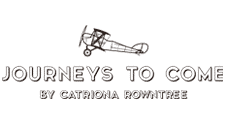Our first stop in Ho Chi Minh City, in Vietnam, is the Cu Chi Tunnels. We’ve all heard about these tunnels, a system of underground pathways used by the Viet Cong in the Vietnam War (known as the American War here in Vietnam). But we can’t quite imagine them.

And so here we are, to see for ourselves the kitchens, hiding spots, torture devices and tunnels created by the Northern Vietnamese fighters.
We learn that the first system of tunnels was built in the 1940s when the Vietnamese were fighting the French for independence. During the Vietnam War, the system of tunnels was greatly expanded and used to move supplies, to communicate and as a method of moving around southern Vietnam largely undetected by American forces.

A local guide demonstrates the use of the holes, burying himself underneath a timber ‘trapdoor’ which is covered in leaves. He is swallowed up by the ground, any trace of the hole – and the ‘soldier’ – hidden from the rest of us. When our guide asks who wants to try the hole for themselves, our brave solo traveller identifies herself. Brenda doesn’t hesitate. She steps forward before the words have finished forming and is soon trying the size of the hole for herself. We soon learn just how brave she is when she runs the length of the tunnels – all 100 or so metres underground. She stops briefly at each exit, just long enough to wave and for us to photograph her achievement.
After inspecting the tunnels, the kitchens and stopping while one of our tour group members learns first hand what it feels like to fire an assault rifle we are ushered to tables and chairs and encouraged to try the tea and taro that the Viet Cong lived on during the war years. The taste is actually much more pleasant than we expected, but it’s easy to think this, when you know your next meal of abundance is just around the corner.

At night our guide takes us on a completely different kind of walk, this time through the streets of Ho Chi Minh City, we wander past the Saigon Notre Dame Cathedral and the Post Office, built in the late 19th Century when Vietnam was occupied by the French, past the stunning City Hall building and along Nguyen Hue Street – a striking Boulevard that emphasises what a truly modern city Ho Chi Minh is.
Our second day in Ho Chi Minh is spent on a river. The Mekong Delta. We learn about some of the traditional manufacturing techniques of the Vietnamese people, watch the riverboat market stalls sell off the last of their produce and stop at a local farmhouse for some lunch. It’s a toss up whether our group is more fascinated by the giant snake or the puppies over lunch…
At our first stop we watch as they make lollies, and rice paper, taste snake wine and toffee. We visit a brick factory with a giant kiln inside and watch as they make clay pots.

Back on the boat, the river is calm – a welcome respite from the crazy traffic of Ho Chi Minh City. We chug through the maze of waterways that make up the Mekong, learning about the local plant life and life on the riverbeds.
On our third day in Ho Chi Minh City we are due to leave, to fly to Da Nang to discover the beauty and history of Hoi An, but we have just enough time for a cyclo tour.
In the days that we have been in Ho Chi Minh City we have watched the traffic in wonder. Amazed that there are not more accidents. There are more than 7.6 million motorbikes, all vying for space, all trying to get somewhere. We’ve struggled to cross the road, to find a gap and the confidence to step off the footpath, and now we’re about to find ourselves immersed in that traffic. We’re about to get right in the middle of it.
We pick out our cyclo drivers, or rather; they pick us, and head off through the streets. The streets in Ho Chi Minh City and Hanoi are designed so that products are grouped together in districts. So if you want to buy a fish, you go to the fish area, if you want to buy material, go to that particular area, if you’ve having a party, go to the party goods area. And so we cycle past shop after shop selling fish, birds, car parts…
And at the end of it all, when our drivers drop us off, our chests puff out just a little further. We braved the Ho Chi Minh City traffic and survived. We feel almost – ALMOST – as brave as Brenda heading through those tunnels.
Diane Squires is a tour host with Two’s a Crowd.








